Note: This text was created with the help of AI.
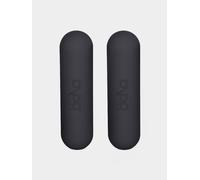

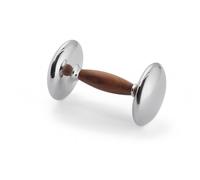










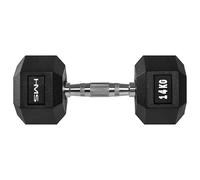









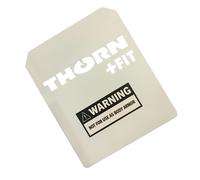


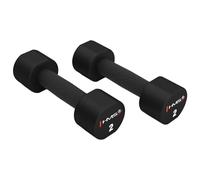
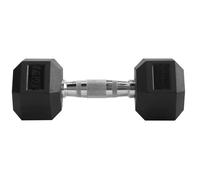







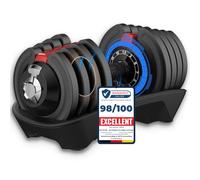



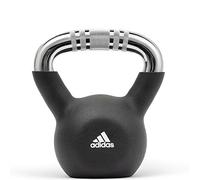
- 1
- 2
- 3
- 4
- 5
- next page
Explore Amazing Offers on Weights
The different types of weights include:
- Dumbbells - for one-handed use, usually consisting of a short bar and any attachable additional weights.
- Barbells - for two-handed use, usually consist of a longer bar and additional weights that can be attached as desired.
- Curl bars - barbells in wavy form
- Kettlebells - dumbbells in ball shape
- Gymnastic dumbbells - rubberized dumbbells in one piece
- Compact dumbbells - dumbbells in one piece, where the weight cannot be changed
In the strength area you work with fewer repetitions, but with higher intensity. If, on the other hand, you want to improve your endurance, train at a lower intensity but with a greater volume, i.e. with more repetitions. If possible, you should own at least one pair of dumbbells to expand your training possibilities with many exercises.
For an effective workout you should keep the pauses between the sets constant, warm up before the workout and never use dumbbells that are too heavy. You should also train your muscles in a balanced way. For example, if you train the biceps, you should also train the triceps to the same extent, so that it does not come to muscular imbalances.
In various sports, dumbbells are a popular training tool to set stimuli and to achieve an increase in performance through the increased resistance. In many areas, particularly heavy dumbbells are not necessary. Sports in which dumbbells are used are, for example:
- Fitness
- Aerobics
- Gymnastics
- Water gymnastics
- Boxing
- Martial arts
- Weightlifting
- Bodybuilding
- Weight training
Many other athletes who play American football, basketball, soccer or handball, for example, also benefit from the opportunities to increase their performance that dumbbell training has in store for them.
With dumbbells you can train almost the entire body. You don't need separate equipment like ab trainers, weight stations, a press or other machines. A few dumbbells are enough. Ideally, you have both dumbbell bars and a barbell bar. Here are just a few examples of how versatile dumbbell training can be:
| Exercise | Muscle groups trained |
| Squats (Squat) | Legs |
| Deadlift | lower back |
| Weighted Crunches (Situps with weight) | Abdomen |
| Row | Back |
| Overhead press | upper shoulder |
| Side lift | lateral shoulder |
| Biceps curls | Biceps |
| Face Pulls | back shoulder |
| Triceps curls | Triceps |
This is just a small selection of exercises that shows that you can easily train your entire body with dumbbell training. Various sport-specific exercises can also be intensified through the use of dumbbells.
Often the iron gets a coating and is covered with chrome or rubber. Sometimes the dumbbells also have a plastic coating. Weight plates made of hard plastic are also available, but these have the disadvantage, especially in higher weight classes, that the weight plates are quite large due to the lower density compared to iron or steel.
In addition, there are also weight sets that are equipped with a sleeve that is made of neoprene or vinyl. These are often used with small gym dumbbells.
The active musculoskeletal system (tendons, muscles, fascia) must first adapt over a few training sessions and adjust to the new load. It is a misconception that lifting many kilos helps to achieve greater training success.
So make sure to train at a moderate intensity when you start, so that your body has time to get used to the new load.
Due to the possibly smaller hands, the diameter plays a role. So that every petite lady's hand can grip the dumbbell stably and safely, there are also dumbbells that have a smaller diameter for more grip strength with small hands.
In addition, dumbbells allow for a much more flexible workout. While you can only do a few exercises on a machine, you don't need more than dumbbells for a comprehensive total body workout. With dumbbells you can target more muscle groups and also train much more complex movement patterns.
Explore Amazing Offers on Weights
Looking to enhance your fitness routine? Whether you're a beginner or a seasoned athlete, pricehunter.co.uk presents a variety of affordable weights that cater to all fitness levels. You can easily compare prices and find the best options to suit your needs, helping you stay fit without breaking the bank.Types of Weights
When it comes to weights, there are several types you can choose from, each designed for specific exercises and workout goals. Here’s a look at the popular varieties:- Iron barbell set - Ideal for traditional weightlifting and strength training.
- Adjustable dumbbells - Versatile options that allow you to change weight as needed.
- Kettlebells - Great for dynamic exercises and improving grip strength.
- Resistance bands - An alternative for those who prefer variable resistance over traditional weights.
- Weighted vests - Perfect for increasing overall workout intensity.
Accessories for Weights
Accessories can greatly enhance your workout experience and effectiveness. Here are some must-have items:- Home gym dumbbell set - A complete set that comes with essential weights and accessories.
- Weightlifting gloves - Protect your hands and improve grip during heavy lifts.
- Weight plates - Increase the load on your barbell for progressive training.
- Storage racks - Keep weights organized and accessible, saving space in your home gym.
- Workout mats - Provide stability and comfort during floor exercises.
Usage Scenarios for Weights
Weights can be utilized in various scenarios, enhancing workouts across different settings. Here's how you might use them:- Barbell with weights - Great for home workouts or gym sessions.
- At-home workouts - Perfect for those who prefer exercising in their own space.
- Group fitness classes - Commonly used in classes for strength training and toning.
- Outdoor workouts - Take your weights outside for a change of scenery.
- Personal training sessions - Enhance your training with customized weight options.
Target Audiences for Weights
Understanding who uses weights can help tailor your fitness journey. Different demographics have varied needs and preferences:- 40 kg weights - Suitable for experienced lifters aiming to push their limits.
- Beginners - Often start with lighter weights or adjustable dumbbells to build strength.
- Rehabilitation patients - Use lighter weights for recovery and strength rebuilding.
- Fitness enthusiasts - Look for a variety of weights to diversify their routines.
- Professional athletes - Require specific weights for sport-specific training.
Popular Brands of Weights
Choosing the right brand can ensure quality and durability in your weights. Here are some reputable brands to consider:- 5 kg weight - Often produced by well-known brands recognized for quality.
- CAP Barbell - Offers a wide range of weights for all fitness levels.
- Body-Solid - Known for durable and professional-grade fitness equipment.
- ProForm - Features compact designs perfect for home gyms.
- Amazon Basics - Affordable options that cater to casual fitness enthusiasts.
Note: This text was created with the help of AI.